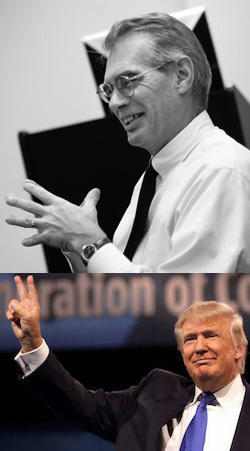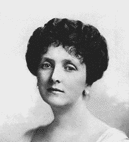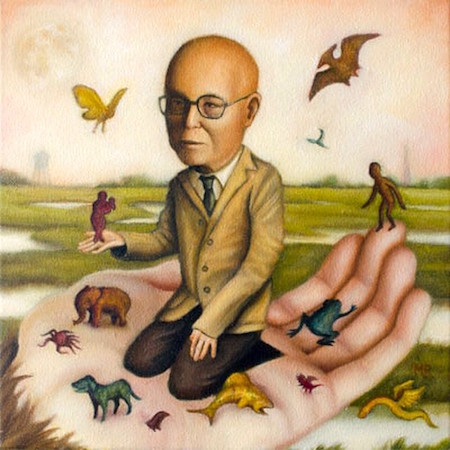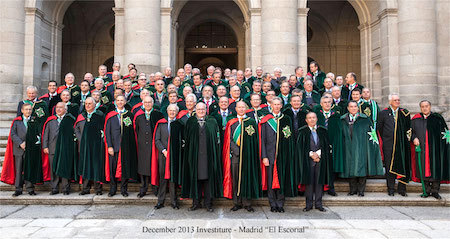Marc Abrahams's Blog, page 281
February 28, 2016
The statistical un-likelihood of Donald Trump [analysis of a Trump-Up analysis]
Contrary to what you might have heard recently (“Get ready for President Trump, says election whiz who’s scary accurate“) from a statistics-driven political scientist, Donald Trump will not “almost certainly become President of the United States” if he wins the Republican nomination. The mainstream media are helping spread that message — while ignoring the work of actual scientists who have examined U.S. Presidential electoral data since 1789 and can tell you the honest truth: Donald Trump would almost certainly lose to Hillary Clinton.
 That Trump-Up statistical adventure
That Trump-Up statistical adventure
Professor Helmut Norpoth‘s Primary Model has been receiving notice in the popular press for its prediction that if Donald Trump becomes the Republican nominee for President, he will have a 97% chance of defeating Hillary Clinton or a 99% chance of defeating Bernie Sanders in the upcoming U.S. Presidential Election (for example, “A Statistician With a Near-Perfect Election Formula Says Prepare for President Trump“).
Our better statistical adventure
As the developers of the Annals of Improbable Research Presidential Election Algorithm (“An Algorithm for Determining the Winners of U.S. Presidential Elections,”), we wish to take this opportunity to make the following observations:
1) Our algorithm agrees that Donald Trump would likely defeat Bernie Sanders (for example, it predicts that a Republican ticket of Donald Trump/Ted Cruz would defeat a Democratic ticket of Bernie Sanders/Elizabeth Warren) but predicts that Donald Trump would be almost certain to lose to Hillary Clinton (for example, Trump/Cruz would lose to a Democratic ticket of Hillary Clinton/Julián Castro).
2) Although Professor Helmut’s model correctly determines the winner of the popular vote in 25 of the 26 U.S. Presidential elections since 1912, our algorithm correctly determines the winner of all 57 U.S. Presidential elections since 1789 (including the elections of 1824, 1876, 1888, and 2000, in which the winner of the popular vote did not receive the most electoral college votes and therefore did not win the election).
3) Professor Helmut’s model ignores vice presidential candidates, whereas we believe they can have a significant impact on the results. For example, if Bernie Sanders becomes the Democratic candidate for President and chooses Lincoln Chafee as the Democratic candidate for Vice President, our algorithm predicts this ticket would defeat Trump/Cruz (although it predicts Sanders/Chafee would lose to a Republican ticket of Donald Trump/Chris Christie). Few Vice Presidential choices would allow Trump to outpace Clinton and she could pick a strong Vice Presidential choice herself, which would make it almost impossible for Trump to win.
4) Finally, whereas Professor Helmut has a Ph.D. from the University of Michigan in Political Science, one of us (ES) has a Ph.D. from the University of Michigan in actual science (Astronomy) and the other (DD) has a Ph.D. from NYU School of Medicine in Neuroscience. The U.S. Presidential Election in November 2016 may well provide a test for which of the models is correct and therefore which fields of study are best suited to predicting the results of U.S. presidential elections.

February 27, 2016
The special HUMAN HEADS issue of the magazine is out!
The special HUMAN HEADS And GARLIC issue (vol. 22, no. 1) of the magazine (the Annals of Improbable Research) is now out! It’s bursting (as are all our issues) with carefully culled, improbable research snippets about everything, from anywhere, more or less.
This is the very first issue of our all-PDF era. We hope you enjoy it, and that you will spread the word to friends and colleagues! There are lots of new columns, and a new design (by the one and only Geri Sullivan) that’s easy to read on smartphones, as well as on larger screens.
If you are a subscriber, you should have received an email letting you know the new issue is available, with directions for downloading your copy.
If you are not yet a subscriber, you can purchase that issue from our Gumroad page.
Back issues of the magazine, and tables of contents, are available on the Improbable website.
Special thanks to Lauren Maurer Trew, our bookmaster, for working much of the tech magic that brought the magazine into this new era.

A Hungarian celebration of Okamura and the miniicreatures
The Hungarian magazine 24 celebrates the mini-creatures work of Ig Nobel Prize winner Chonosuke Okamura. Okamura was posthumously awarded the 1996 Ig Nobel Prize for biodiversity, for discovering the fossils of dinosaurs, horses, dragons, princesses, and more than 1000 other extinct “mini-species,” each of which is less than 1/100 of an inch in length. [REFERENCE: the series “Reports of the Okamura Fossil Laboratory,” published by the Okamura Fossil Laboratory in Nagoya, Japan during the 1970’s and 1980’s.]
Here is 24‘s celebratory drawing of Okamura:
Here are some of Okamura’s photomicrographs of what he identified as fossils of mini-creatures:


February 26, 2016
“Like” a linguistics study
“Discourse marker like (DML) is recognized as a highly stigmatized feature of American English, one with strong ideological ties to inarticulate, ‘Valley Girl’ speech. Previous work suggests that individual listeners form impressions that both reference and perpetuate DML’s status, as DML- containing speech is judged as friendlier and less intelligent than controls.”
But what about the magnitude and/or stability of DML- based impressions or the potential interactions between said effects and individual processing styles? For answers, turn to work produced at the linguistics department of Michigan State University, where Ashley Hesson and Madeline Shellgren have recently completed the first moment-by-moment impression-formation study of “like”.
“Our results indicate that DML has an initial negative effect on both FRIENDLINESS and INTELLIGENCE ratings. While the ‘unfriendly’ perception is relatively transient, the ‘unintelligent’ evaluation persists and intensifies over time. Individuals with relatively high levels of social aptitude and/or cognitive flexibility are largely responsible for these trends.“
BONUS: Author Dr. Madeline Shellgren (now at Davenport University, Michigan, US) is in the process of assembling one of the very few formal academic studies of ‘Redneck-speak’.
See: VERMONT REDNECKS: WHAT LOCAL INSTANTIATIONS OF A SUPRA-LOCAL IDENTITY MIGHT TELL US ABOUT THE EMERGENCE AND MAINTENANCE OF A GLOBAL IMAGINED COMMUNITY
TASK [optional] Count the number of times the word ‘like’ is used (as a discourse marker) in the video above.
BONUS (possibly unrelated): The new study “Does ‘Like’ Really Mean Like? A Study of the Facebook Fake Like Phenomenon and an Efficient Countermeasure“. (Thanks to Betsy Devine for bringing this to our attention.)

February 25, 2016
The Spork, and the International Order of St Hubertus
Who invented the spork? That’s disputed.
Who invented the International Order of St Hubertus? Count von Sporck. So they say.

‘Animal deterrent and training device and method thereof’ (new patent)
Trouble with cats on your counters, table tops, furniture, curtains, floor areas – or maybe “hanging out at your entry door”? Inventor Shawn Tait of Issaquah, WA, US, noted that “they just don’t like being squirted or misted with simple inexpensive water” and has just received a 2016 US patent for his ‘Animal deterrent and training device and method thereof,
The device, marketed as CounterWatch™ Sentry, is already on sale. Details can be found here.
Note (deterrent related): Howard Stapleton of Merthyr Tydfil, Wales, was the recipient of the 2006 Ig Nobel Peace Prize for inventing an electromechanical teenager repellant — a device that makes annoying high-pitched noise designed to be audible to teenagers but not to adults; and for later using that same technology to make telephone ringtones that are audible to teenagers but probably not to their teachers.

February 24, 2016
Social dilemmas from the not-so-distant past [Podcast 52]
An index of awkward social dilemmas dominates this week’s Improbable Research podcast.
SUBSCRIBE on Play.it, iTunes, or Spotify to get a new episode every week, free.
This week, Marc Abrahams —with dramatic readings by Robin Abrahams — tells about:
 Awkward Social Dilemmas —
Etiquette
, by Emily Post, 1922.
Awkward Social Dilemmas —
Etiquette
, by Emily Post, 1922.The mysterious John Schedler or the shadowy Bruce Petschek perhaps did the sound engineering this week.
The Improbable Research podcast is all about research that makes people LAUGH, then THINK — real research, about anything and everything, from everywhere —research that may be good or bad, important or trivial, valuable or worthless. CBS distributes it, on the CBS Play.it web site, and on iTunes and Spotify).

February 23, 2016
Rejoice? Run? Hide? The Dawn of Experimental Econophysics
 Everything can be explained, to some degree, by marrying economics to physics. This book does that:
Everything can be explained, to some degree, by marrying economics to physics. This book does that:
Experimental Econophysics: Properties and Mechanisms of Laboratory Markets, by Ji-Ping Huang [pictured here], Springer, 2014, ISBN 978-3-662-44234-0. The author explains:
 “Experimental Econophysics describes the method of controlled human experiments, which is developed by physicists to study problems in economics or finance, namely stylized facts, fluctuation phenomena, herd behavior, contrarian behavior, hedge behavior, cooperation, business cycles, partial information, risk management, and stock prediction. Experimental econophysics along with empirical econophysics are two branches in the field of econophysics.”
“Experimental Econophysics describes the method of controlled human experiments, which is developed by physicists to study problems in economics or finance, namely stylized facts, fluctuation phenomena, herd behavior, contrarian behavior, hedge behavior, cooperation, business cycles, partial information, risk management, and stock prediction. Experimental econophysics along with empirical econophysics are two branches in the field of econophysics.”
BONUS: Principles of Topological Psychology

February 22, 2016
Delivering sarcasm? Which ear to use?
Q. If you’re going to make a sarcastic remark to someone, which of their ears should be targeted to elicit the swiftest response?
 As a result of a recent experimental study, a research team from the Department of Psychology, Washburn University, US, the Department of Psychology, University of Kansas, US, and the Department of Psychology, University of New Brunswick, Canada, are in a position to reveal an answer :
As a result of a recent experimental study, a research team from the Department of Psychology, Washburn University, US, the Department of Psychology, University of Kansas, US, and the Department of Psychology, University of New Brunswick, Canada, are in a position to reveal an answer :
“[…] 48 participants completed a target detection task using dichotically presented phrases that were sincere (message compatible), sarcastic (conflicting semantic and prosodic message), or neutral (no emotional prosody). Sarcastic phrases presented to the left ear (LE)/RH produced faster response times than sarcastic phrases presented to the right ear/left hemisphere.“
The team’s paper is scheduled for publication in the journal Laterality: Asymmetries of Body, Brain and Cognition. See: ‘Detection of sarcastic speech: The role of the right hemisphere in ambiguity resolution’.
The photo: shows lead author, Professor Linzi Gibson, at Washburn University.
Also see: ‘Laterality in Canine Cradling‘

February 21, 2016
When is a Transport Map Too Complex for Your Brain?
This new study explains, maybe, why so many people feel overwhelmed in navigating a big city by metro or bus. The study is:
“Lost in transportation: Information measures and cognitive limits in multilayer navigation,” Riccardo Gallotti, Mason A. Porter, Marc Barthelemy, Science Advances, epub February 19, 2016. The authors, at the Institut de Physique Théorique, France, the University of Oxford, UK, and École des Hautes Études en Sciences Sociales, France, report:
“Cities and their transportation systems become increasingly complex and multimodal as they grow, and it is natural to wonder whether it is possible to quantitatively characterize our difficulty navigating in them and whether such navigation exceeds our cognitive limits. [Evidence] suggests the existence of a limit associated with cognitive overload and caused by a large amount of information that needs to be processed. In this light, we analyzed the world’s 15 largest metropolitan networks and estimated the information limit for determining a trip in a transportation system to be on the order of 8 bits. Similar to the ‘Dunbar number,’ which represents a limit to the size of an individual’s friendship circle, our cognitive limit suggests that maps should not consist of more than 250 connection points to be easily readable… In large cities such as New York, Paris, and Tokyo, more than 80% of the trips are above the 8-bit limit. Multimodal transportation systems in large cities have thus already exceeded human cognitive limits.”
(Thanks to Tony Tweedale for bringing this to our attention.)
BONUS: Mason Porter is a member of the Luxuriant Flowing Hair Club for Scientists.

Marc Abrahams's Blog
- Marc Abrahams's profile
- 14 followers









